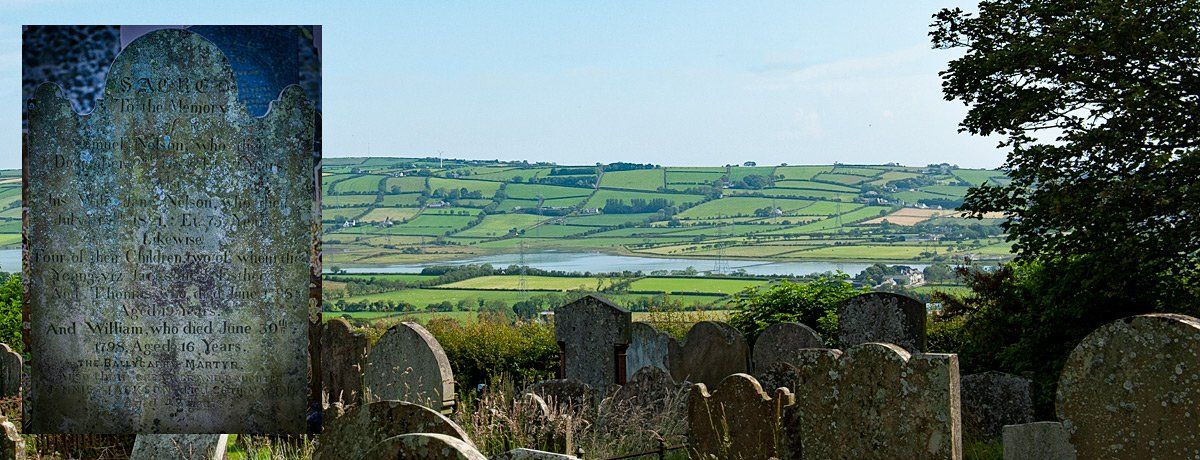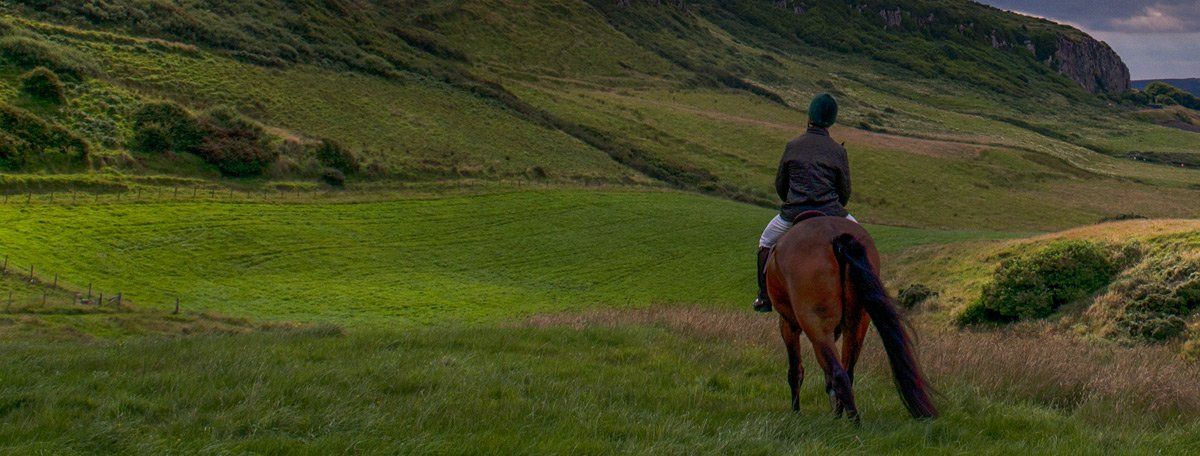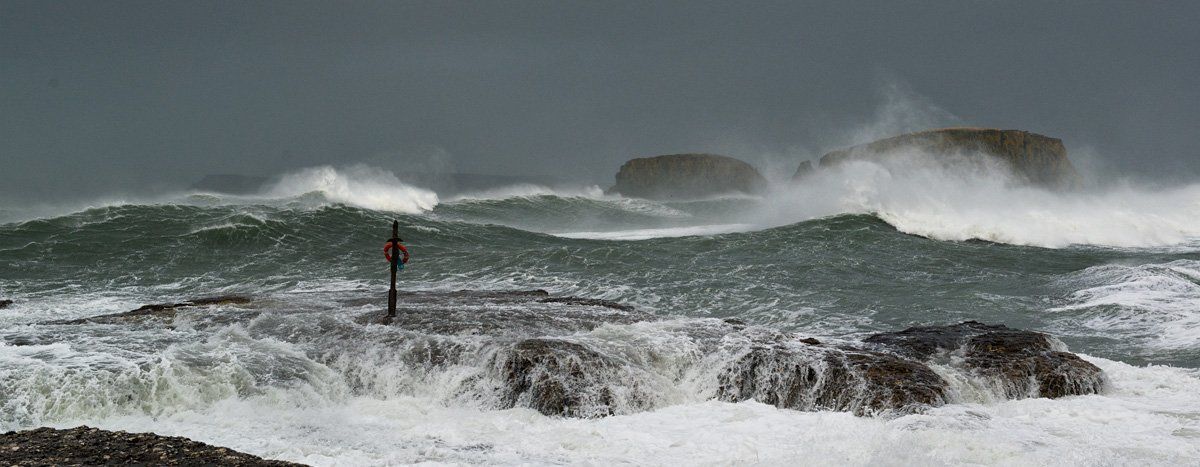Ballycarry Martyr
In the graveyard is the headstone of William Nelson aged sixteen whose headstone is inscribed the Ballycarry Martyr. During 1798 and in reaction to a call against inequality and the disparity of rule coming from Dublin many men in the village took part in the uprising of the United Irishmen, William went along with a group of men to the local landlord's house to look for muskets, here they took a horse and he was told to go and tell the men on Islandmagee to come over as the rebellion had started. He came back and took another horse and went to Donegore Hill where the men gathered before the Battle of Antrim.
After the rebellion, he was arrested and taken to Carrickfergus and ask to witness against other men from the village who took part in the uprising in return for his life which he refused to do. His mother's plea for clemency was refused and he was hung from a tree in the village. No-one was allowed to come to his wake and soldiers surrounded the house and the funeral procession to prevent any gathering. The Ballycarry Martyr engraved on his headstone was added later. His brother John and Samuel were transported to the West Indies for their part in the uprising, Samuel died en route.
The ship was attacked and captured by the French but eventually arrived in America where John was freed. He began his life there as a builder and progressed to architect, through his work he became a personal friend and architect to President Thomas Jefferson whose home he designed and built as well as The University of Virginia. He also worked for James Madison who would become the 4th President of the United States. Although he never returned to Ballycarry he did send money back to his mother. Before he died he asked that a likeness of himself should be taken back to his family in Ireland. He sent this to Mary Ann McCracken, the sister of Henry Joy McCracken and she delivered it to his family.



